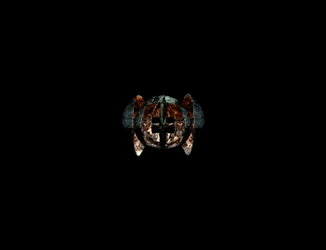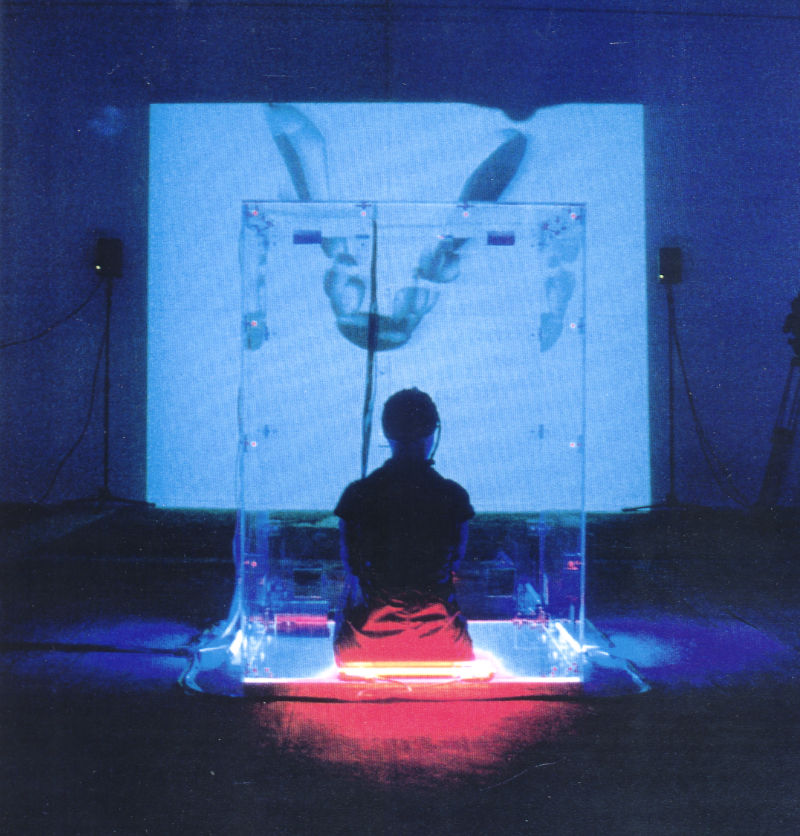The Creative Elements
The Creature
The creature’s closest relatives in the real world might be crabs, or spiders, although it has fewer legs and doesn’t look a lot like either. The creature exists inside a computer – a different world with different possibilities and limitations to our own. It is manifest by projection onto the walls of the room.

The choreography for the creature is derived from that of the human dancer. The creature literally uses the sensors on the human’s body to see her (see the technical section for more details). Intricate movement patterns and responses are programmed into the creature’s behaviour so it responds in complex ways to her movement. The creature does not mimic the human’s movement but rather has movement characteristics of its own within which it responds to her actions.
Choreography
Every movement created for the human draws a response from the creature, which then causes us to modify the movement for the human, which draws a different response from the creature, and so on. The result is a very intimate relationship between the movement of the human and that of the creature.
The choreography for the human draws inspiration from the sculpture of Auguste Rodin. He often posed his models in uncomfortable positions which required a lot of tension in the body, yet they rarely strike the viewer as uncomfortable since the poses draw out beauty from the human form. Dance has often used tension as an integral part of its style but it is rare for the forms to be as intricately twisted as those of Rodin since the audience are rarely close enough to appreciate such detail. Presenting this work as an installation with the audience approaching close to the dancer allows them to see this detail and the woman becomes a living sculpture.

Design
In the middle of the room is a perspex container in which the human is encased. The container restricts her movement substantially. The cabling on her body snakes up through the top of the container to the roof.
The creature is projected onto the wall of the room. It is substantially bigger than the woman, about three metres tall, but her dominant position in the centre of the room creates a balance between them.
The public enter and walk all around the room, occupying the space between and around the dancer and the creature.
Music
Sometimes the sound is very sparse, and at others it is very dense. The sound fills the space occupied by the two dancers and the audience. Different sounds are localised within the space such that the sound heard varies as the viewer walks around the area. The sound is influenced by the movement of both dancers, the human and the creature, and in many cases, their movement actually generates the music. The sound creates an atmosphere in which the installation exists.
Conclusion
On one level, this entire project is about the relationship between live media and digital media. The relationship between the two dancers – the real human and the virtual creature – is an active relationship between live media and digital media. That relationship gains an extra edge as it is experienced directly in the live performance, where both the real and digital dancers are performing live. This relationship is further enhanced as the movement of both dancers influences the music.
The creature is symbolic of the human’s view of technology – powerful, frightening, both seductive and repulsive, and totally alien. It is a view of technology shared by many. The metaphor can be taken further as the love/hate relationship between humankind and technology as we come to terms with the potent, attractive beast we’ve discovered in the silicon chip.
